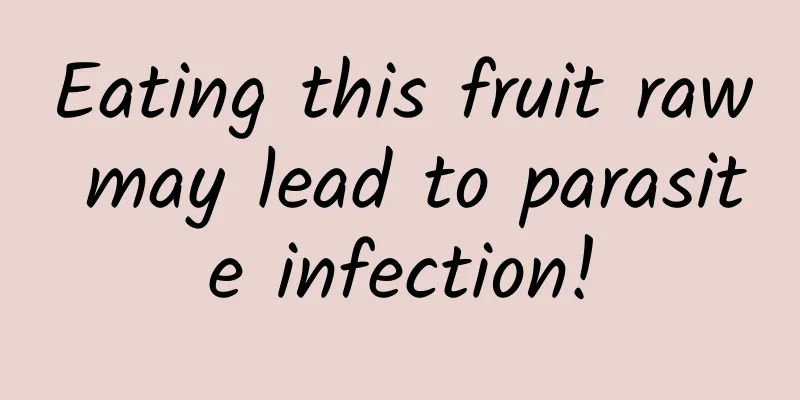What to do if both sides of the fallopian tube are blocked

|
For women with blocked fallopian tubes, their biggest wish every day is to have their fallopian tubes unblocked and become pregnant successfully. Of course, in the process of achieving this goal, women face many practical difficulties, and sometimes they need to endure certain physical injuries, such as surgical injuries. In fact, every woman hopes to get pregnant, so what should we do if both sides of the fallopian tubes are blocked? According to the degree of blockage of the fallopian tube, there are three types: 1. The fallopian tube is obstructed. The cause is blockage by debris, shed cells or blood clots in the tube; or the fallopian tube is too thin and curved; or the fallopian tube is adhered to the pelvic wall and adjacent organs, pulling the movement of the fallopian tube. Treatment can be done by laparoscopy. Adhesions outside the fallopian tube can also be cut and broken down through laparoscopy to "loosen" the fallopian tube. With treatment, most patients can become pregnant. 2. The fallopian tubes are blocked and the damage is relatively minor, but most of the fallopian tubes are normal. In this case, the fallopian tube can be cleared or the catheter can be placed for 24 hours through combined uterine and abdominal surgery. If there is hydrosalpinx, an incision can be made on it to drain the fluid, and then the tube can be turned over and sutured to prevent adhesion again. Generally speaking, the surgery is effective and the success rate can reach over 90%. 3. The fallopian tubes are completely blocked and severely damaged. This situation is mostly caused by delayed treatment due to a long course of illness or fallopian tube tuberculosis infection. Because the fallopian tubes become scarred, contracted, and stiff, and their functions undergo irreversible changes, it is difficult to conceive naturally even if they are successfully unblocked. Generally, in vitro fertilization is required after surgery. It is recommended to first use dynamic digital hysterosalpingography to understand the specific location of fallopian tube obstruction and then provide symptomatic treatment. Blockage or poor obstruction of the fallopian tubes is an important cause of female infertility, with inflammation being the main cause of the disease. Its formation can be caused by incomplete or inadequate treatment of acute salpingitis. Sometimes it causes adhesion of the fallopian tube mucosa, such as incomplete miscarriage or retained placenta causing inflammation. Some people with intrauterine devices may develop chronic salpingitis. Long-term inflammatory stimulation causes the fallopian tube to thicken and harden, and the lumen to adhere and narrow, and even adhere to the surrounding tissues, thereby affecting the fallopian tube's ability to pick up eggs and transport sperm and eggs. Most patients with fallopian tube obstruction have symptoms of chronic pelvic inflammatory disease, such as pain on one or both sides of the lower abdomen, prolapse, excessive secretions, and low back pain. |
<<: Can I do IVF if my fallopian tubes are blocked?
>>: Are there any symptoms of blocked fallopian tubes?
Recommend
CounterPoint: Global refurbished smartphone market to grow 5% in 2024, iPhone market share to rise to 56%
According to a report from market research firm Co...
Pregnant woman wipes her butt hard and there is blood
Many pregnant women have experienced the situatio...
What are the causes of irregular menstrual cycles in women?
Nowadays, many women have irregular menstruation....
Why does my stomach hurt during menstruation?
Many women experience abdominal pain, soreness, a...
What causes black spots on hydrangeas? How to remedy black spots on hydrangeas?
Hydrangea is also quite common in our daily life....
What are the symptoms of AIDS in women?
When it comes to AIDS, many people will think of ...
Why is my period dark red?
During the menstrual period, women will pay speci...
5 reasons why women’s breasts can’t grow bigger
First: Insufficient protein intake The weight los...
Is ureteroscopic lithotomy painful?
With the development and progress of society, var...
Black stool during early pregnancy
Some women may experience some discomfort symptom...
The new coronavirus variant is spreading rapidly in South Africa, and one case has been found in Hong Kong
On November 25th local time, the National Institu...
What is the ranking of nutritional supplements for pregnant women?
It is very important to give pregnant women prope...
What to do if women have dryness during intercourse
For young couples, they have regular sexual inter...
How to make eyelashes longer and thicker
Whenever they see other girls with long and thick...
Can I keep a dog while preparing for pregnancy?
The reason why it is said that you cannot keep pe...









